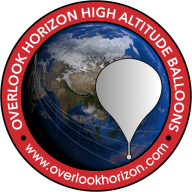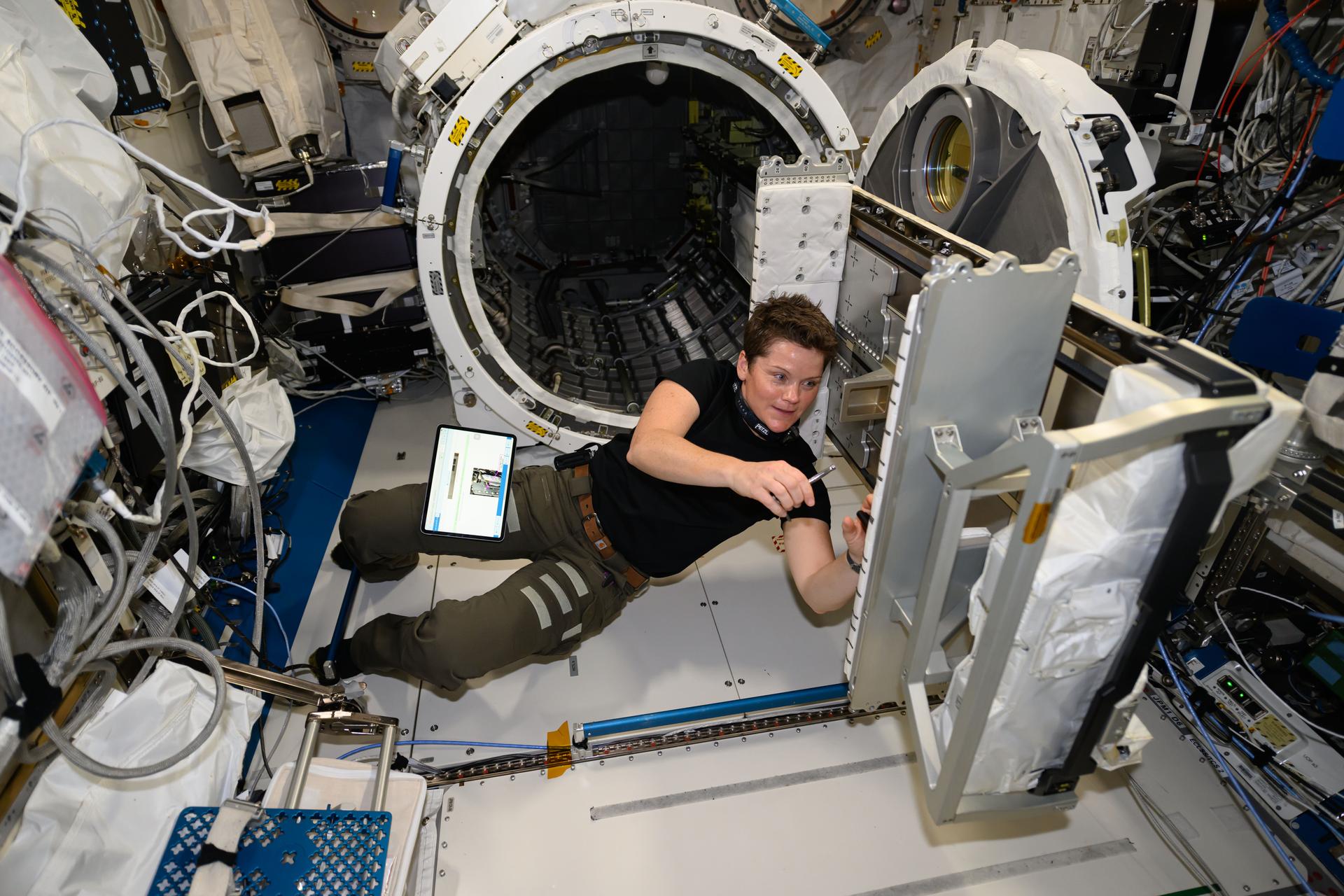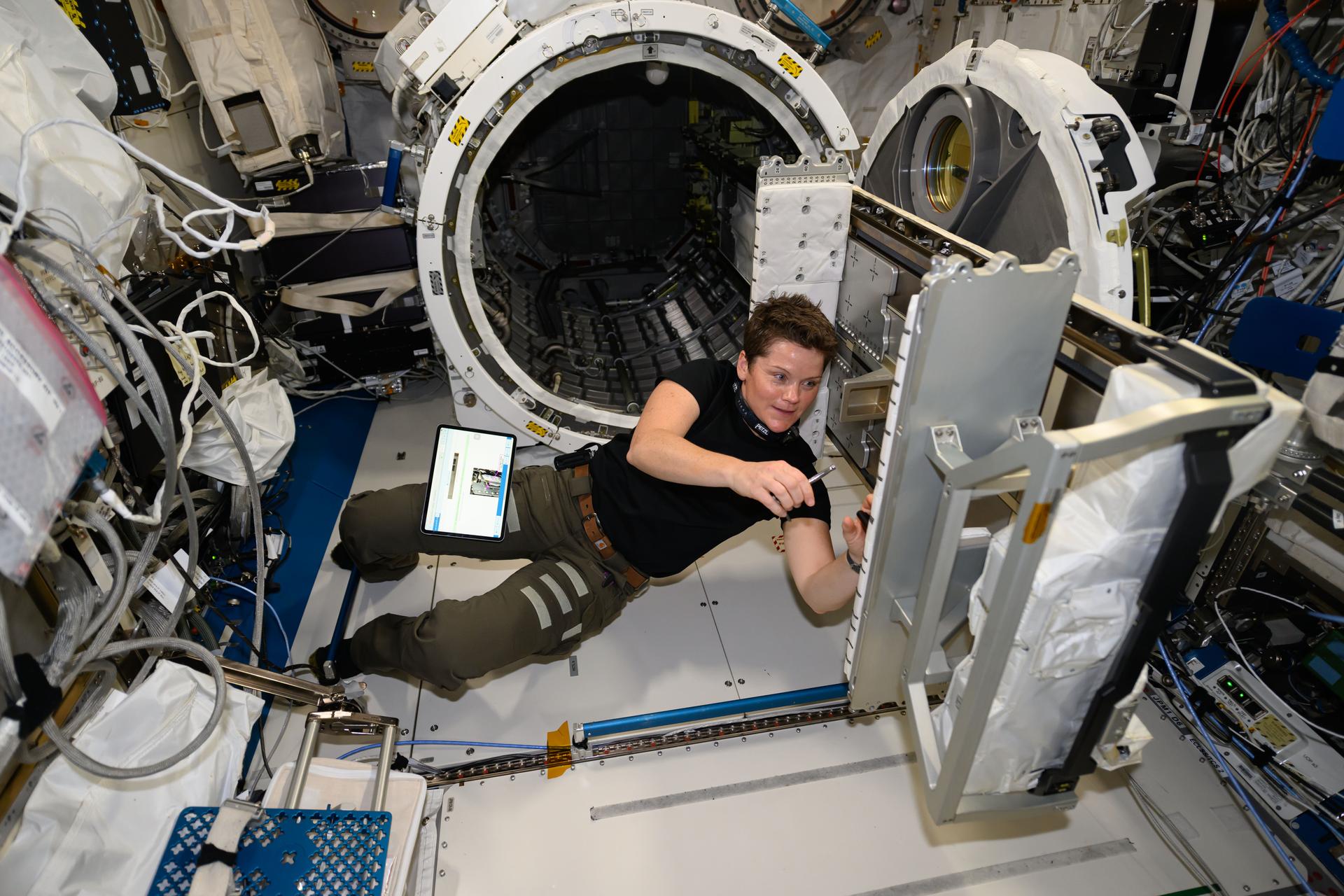Vision studies, a blood investigation, and more were underway aboard the International Space Station on Wednesday informing scientists how astronauts adapt to long duration spaceflight. The knowledge gained from the ongoing investigations is helping NASA and its international partners protect crews while planning missions to the Moon, Mars, and beyond.
Expedition 72 Flight Engineers Nichole Ayers and Anne McClain, both NASA astronauts, joined each other on Wednesday for two sessions of the CIPHER investigation to learn how microgravity affects a crew member’s eye structure and vision. The duo first set up a variety of medical imaging hardware to examine the retina and optic nerve. Ayers led both biomedical studies starting with the first research session that saw McClain wear electrodes measuring her retinal response to light. For the second session, McClain peered into a device, operated by Ayers, that provides high resolution images of the retina and optic nerve.
Veteran NASA Flight Engineer Don Pettit also spent his day on space biology first collecting his blood, saliva, and urine samples, then processing them, and finally stowing them in a science freezer for future analysis. Pettit also took a standard vision test looking at an eye chart to measure his visual acuity, or ability to recognize small details with precision. Doctors on the ground are constantly monitoring astronauts’ eyes to counter well-known space-caused symptoms and ensure long-term crew health.
Flight Engineer Takuya Onishi of JAXA (Japan Aerospace Exploration Agency) joined in Wednesday’s biomedical studies first assisting Pettit with his blood collection activities then photographing Ayers and McClain during their eye studies. Onishi, who is on his second space station mission, spent the rest of his shift on even more space research as he checked out a spherical robot camera and turned on a Kubik research incubator for a cellular immunity study. At the end of his shift, he joined Ayers and set up the T-Mini wearable research hardware that measures an astronaut’s core body temperature and provides wireless medical evaluation capabilities.
Station Commander Alexey Ovchinin and Flight Engineer Ivan Vagner were back together on Wednesday continuing to study how living in weightlessness affects the circulatory system. Doctors are exploring how blood circulates back and forth from a crew member’s head to their limbs in space to assess cardiac health.
Flight Engineer Kirill Peskov, during the first half of his shift, continued replacing life support gear that condenses and purifies water in the Zvezda service module. Next, the first-time space flyer downloaded radiation data collected to measure the amount of radiation the orbiting lab and its crew is exposed to.
The Canadarm2 robotic arm is being readied for its upcoming grapple and release of the Northrop Grumman Cygnus space freighter scheduled for 6:55 a.m. EDT on Friday. Robotics controllers on the ground reconfigured the Canadarm2 for spacecraft operations on the orbital lab where it will visually inspect Cygnus on Thursday before removing it from the Unity module and releasing it into Earth orbit on Friday completing a seven-and-a-half-month cargo mission.
Learn more about station activities by following the space station blog, @space_station and @ISS_Research on X, as well as the ISS Facebook and ISS Instagram accounts.
Get the latest from NASA delivered every week. Subscribe here: https://www.nasa.gov/subscribe


